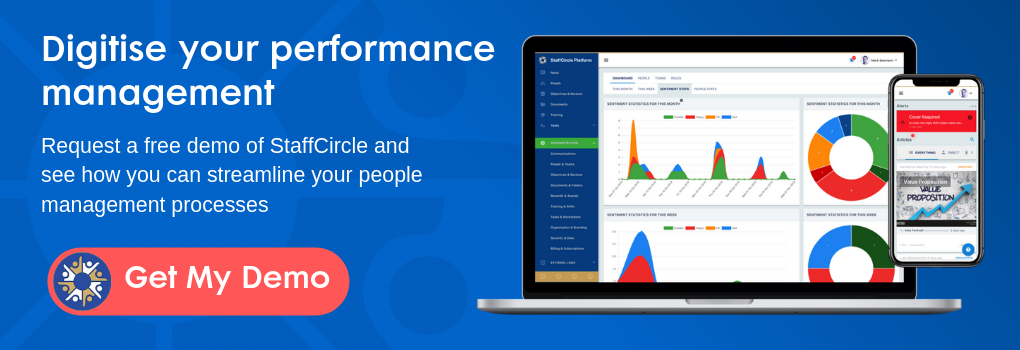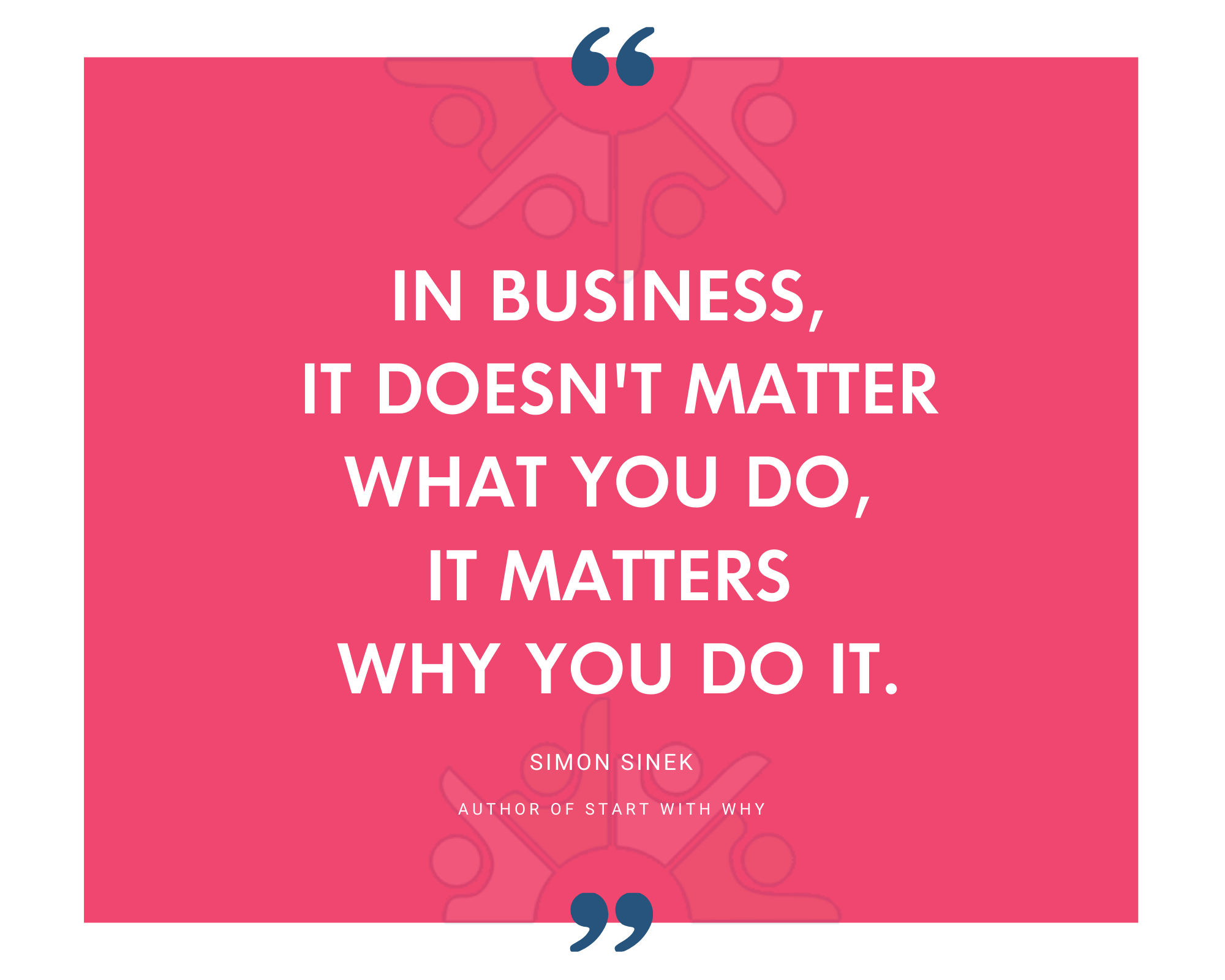One of the biggest challenges facing UK businesses in 2020 is how they attract and retain the best talent in a highly competitive employment market.
Moving from traditional paper-based performance management tools to leaner, more agile technologies is a giant leap in the right direction. This is why software-based performance management tools are becoming increasingly important when it comes to keeping staff engaged and aligned with an organisation’s core objectives.
Without a doubt, a motivated workforce will achieve the best results and performance management tools are central to keeping them on track by providing reliable and practical feedback.
But if you aren’t regularly and consistently tracking your main goals, and measuring how well-aligned to them your employees are, then your company’s performance may fall short of expectations.
What follows is a comprehensive guide as to how you can make the most of your performance management tools to ensure your goals are effectively tracked, remain relevant and aligned to your company’s core mission.

How to Score Performance Objectives
OKRs
Objectives and Key Results offer businesses a revolutionary way to establish and achieve ambitious goals, helping numerous high profile corporations achieve success and exceed expectations while coordinating and empowering the workplace.
OKRs provide an effective goal management framework that helps improve focus and transparency and thereby encourages the workforce to achieve common objectives.
The setting of defined goals gives organisations the ability to measure and score their performance objectives – vital for constructive feedback.
It’s important to remember that your OKRs need to be flexible, transparent, measurable and aspirational. It is also well worth allowing a flow of ideas and solutions both across teams and up and down the corporate hierarchy. This approach helps engage employees at all levels, increasing the likelihood of retaining the rising stars within your business – instead of losing them to your competition. This is a key consideration: if they go, not only will you have lost the management time and money you invested in these staff; they will also take their learnings and experience straight to your rivals. Clearly, this is best avoided.
Research has found that employees who use Objectives and Key Results are much more effective at their jobs than those who don’t. This likely means they are happier and happy staff are more productive and more likely to remain loyal.
Tracking your goals and outcomes with a performance management tool ensures that your OKRs are constantly evolving organisms rather than static. This will drive engagement, improve visibility and encourage internal networking. So you can see this is an important consideration for HR directors.
They might also consider incorporating employee self-assessment to give added nuance to performance management tracking. Giving employees the opportunity to grade their own performance can help them to better understand what areas need improvement, as well as provide managers with contextual feedback.
How to link company, department and individual goals to create alignment
Once you have established your corporate, departmental and individual long term goals, you need to figure out how to link these to ensure all goals are aligned.
The answer to this problem is to pair your long term ambitions with a short term action plan, by merging SMART and stretch goals as a focused component of your performance management process.
SMART Goals
SMART goals were established as an integral component of the HR function back in 1981, and the acronym stands for Specific, Measurable, Attainable, Realistic and Timeline. Each step is intended to help companies establish achievable goals and then create a concrete plan of action.
There are, however, pros and cons to SMART goals that you need to consider.
On the plus side, using this method brings greater focus. This is because, with clear goals to aspire to, it is easier to ensure you are focusing on business priorities.
For employees, having their tasks set out before them will allow them to keep track of their progress and help with their own time management. This in turn will help staff and managers to keep track when it comes to performance management.
The downside of SMART goals is that they may distract people from doing things that could be more intrapreneurial. This is because they may be too focused on their SMART to-do list, with the risk they ignore potentially more important opportunities. In other words, they can be seen as being too constraining.
Stretch Goals
While SMART goals are best for implementing short term objectives, stretch goals are appropriate for managers wanting to push teams to achieve more ambitious results.
Again, there are pros and cons to this approach. Committing to goals that may seem overly ambitious or unattainable can demotivate staff because they see them as unrealistic. However, numerous studies have confirmed that this approach can lead to impressive jumps in productivity and innovation.
The pros for stretch goals is that by setting very ambitious goals can leverage creative thinking among staff, encouraging them to think in a more intrapreneurial way. In other words, they may relish the opportunity to think big and this may lead them to come up with highly innovative solutions.
While this would be an impressive result, stretch goals do have their downsides. For instance, stretch goals can lead to panic. If the goal seems out of reach, employees may believe achieving success is impossible and this is highly undesirable and demotivating.
Pushing top-performing teams to achieve even more can also cause stress. This can lead to mental health issues and the possibility of a rise in absenteeism.
Another potential problem is that stretch goals might tempt employees to take unnecessary risks, which could have detrimental effects on both staff and the company.

Eliminate the cons by pairing SMART and stretch goals
While SMART and stretch goals have their benefits and shortcomings when used independently, when combined into an effective performance management system they can supercharge your employees to hit the most ambitious targets while creating a culture of innovation.
One way to accomplish this is to pair your stretch goals with SMART goals on a to-do list. You can find more information on SMART and Stretch goals, and how to align them in our previous blog post.
Four essential books to help set your performance management objectives
Check out these essential books and you can fire up your performance management tools to guarantee optimal results, hitting those ambitious goals which will push your business towards success.
Smarter, Faster, Better – Charles Duhigg (Windmill Books)
Charles Duhigg’s book Smarter, Faster, Better follows up his best selling book The Power of Habit. Written for the general reader, this is an essential foundational text for anyone interested in improving their level of productivity and hitting their goals.
Measure What Matters – John Doerr (Portfolio/Penguin)
If Smarter, Faster, Better helps put you into a productive mindset, Measure What Matters provides you with the tools for achieving your goals. Written by legendary venture capitalist John Doerr, this is widely considered to be the gold standard of books when it comes to outlining the benefits of using objectives and key results to drive your company’s growth.
Work Rules! – Laszlo Bock (John Murray Publishers)
It’s hard to think of a company that better embodies the concept of establishing and delivering ambitious goals than Google. It’s fitting, too, that Google owed something to Measure What Matters author John Doerr for their success; Doerr invested $12 million in the company when it was a small start-up in Silicon Valley.
Laszlo Bock worked as Google’s Senior Vice President of People Operations during a period when the company transformed into an economic powerhouse that dwarfs many countries, and his book Work Rules! offers readers a comprehensive overview of the management practices which helped them achieve their goals.
Beyond Performance Management – Jeremy Hope and Steve Player (Harvard Business Review Press)
Beyond Performance Management is aimed squarely at the professional, exploring in detail concepts such as enterprise risk management, lean practices for accounting, manufacturing and services, and other areas including investment management and sustainability. While the topics covered are diverse, there’s plenty of material here to help management professionals kick start their performance and improve their company’s chances of hitting their objectives.
 Further reading:
Further reading:
Managing Quality: An Essential Guide and Resource Gateway by Barrie G. Dale (Editor), David Bamford (Editor), Ton van der Wiele (Editor)
Managing Quality combines the latest information on quality management system series standards with up-to-date tools, techniques and quality systems. Highly relevant for professionals, particularly those involved with reacting to rapid developments in the global market.
Operating Model Canvas: Aligning Operations and Organization with Strategy by Van Haren Publishing (Editor)
The journey from strategy to operating success depends on creating an organization that can deliver the chosen strategy. The book explains the Operating Model Canvas, which helps you to create a target operating model aligned to your strategy.
Leading with Impact by Keith Bleasdale (Author), Ben Bleasdale (Illustrator)
Leading with Impact is written by a highly-accomplished Leadership Development professional who has been a major force behind a number of most successful initiatives in multiple industries.
Leading Teams – 10 Challenges : 10 Solutions by Mandy Flint (Author), Elisabet Vinberg Hearn (Author)
Leading Teams covers 10 of the most common team challenges faced by any business owner, with proven solutions for each challenge. The book is packed full of valuable advice and powerful techniques to ensure your team delivers consistent and lasting results. Whatever your level or profession, Leading Teams has something practical to offer everyone.
Start With Why: How Great Leaders Inspire Everyone To Take Action by Simon Sinek (Author)
In business, it doesn’t matter what you do, it matters WHY you do it. Start With Why explains the framework needed for businesses to lead and inspire, by asking the question ‘Why?’.
Why do we do what we do? Why do we exist? Learning to ask these questions can unlock the secret to inspirational business. Sinek explains what it truly takes to lead and inspire and how anyone can learn to do it.




 Further reading:
Further reading:

